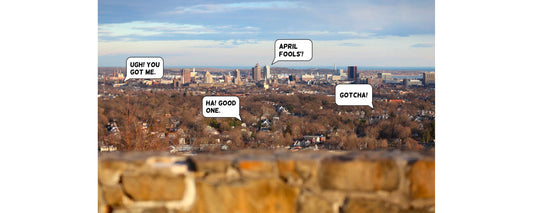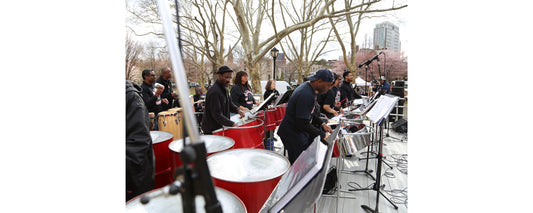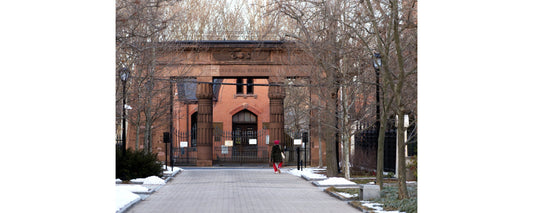Incorporated in 1780, the town of Cheshire actually traces back to 1695, when it was a section of Wallingford named “West Farms.” A small agrarian community then, it’s not so small today, with a healthy suburban population of 29,000. But agriculture is still a point of pride: Cheshire proclaims itself the “bedding plant capital of Connecticut,” due to the many nurseries and farms there that produce the seasonal, colorful, bombastic flowers that end up in pots, planters and, of course, garden beds around the state.
With a pitch like that, you might think Cheshire’s petals make a good-enough reason alone to put pedal to metal up I-91 and Route 10, or to pedal your bike up the Farmington Canal Trail. Maybe they are. But thinking outside the flower box yields rewards only Cheshire can deliver.
In this town, where good things are often hidden from street view or marked by subtle signage, it’s helpful to have a guide to get you started, and it’s hard to imagine a better one than Ron Gagliardi, a colorful character who’s lived in Cheshire for over four decades (and who wrote a book covering most of the rest of its history, Images of America: Cheshire, published in 2001). He even earned an unofficial “Mr. Cheshire” title by winning a spoof beauty pageant in 1975, when a group of high school guys competed for the dubious distinction.
sponsored by
Gagliardi’s local pride hasn’t changed much in the intervening years, though his title has. Gagliardi is now Cheshire’s town crier, entrusted with donning a dandy tricorn hat and leading the parade during the town’s annual Fall Festival. An art teacher in Wallingford by day, he serves on myriad boards of historical and artistic organizations; he’s also a punster, a rock ’n’ roller, a standup comic, a lifelong Yankee fan and a cartoonist.
No wonder, then, that Gagliardi recommends the Barker Character, Comic & Cartoon Museum, where he also gives tours sometimes. Visitors first buy tickets at the physically separate Barker Animation Art Gallery in front ($5, or $3 for kids under 12 and $0 for those 2 and under), then enter an extraordinary toy land in another, deceptively large building in back.
The brain child of Herb Barker, who now spends much of his time in Florida, the museum, opened in 1997, is packed to the gills with an astounding 80,000 character-based objects, traversing what must be every creative lineage of American pop culture significance in the last 150 years. Many of the items are extremely rare, such as a Mickey Mouse-branded tube of toothpaste that may be the only one of its kind in existence.
sponsored by
Search long enough and you’ll find a wealth of artifacts relating to Barker’s first love, Popeye the Sailor Man. Gumby has a healthy presence as well, including figures and set pieces used in actual productions. Super-sized versions of Alvin and the Chipmunks stand together downstairs; the Simpsons sit on a sofa upstairs, with the Lorax hanging out just behind. Vintage Star Wars and Star Trek items fight for intergalactic supremacy in adjacent glass cases. In one room, over 400 vintage lunch boxes, from A Team to Zorro, hang from the ceiling. Around the bend, a life-sized Incredible Hulk—standing nine sinewy, green feet tall—looks like he’s just gotten angry.
In other spots, you might spot Shaggy Dog, the Pillsbury Dough Boy, Garfield, the California Raisins and Dorothy and friends from The Wizard of Oz, plus Betty Boop and Elvis and Superman and way too many others to mention. Back in the equally dense Barker Animation Art Gallery, discover artwork of Fred Flintstone crossing the Delaware, Dr. Bugs Bunny treating a patient and Olive Oyl giving Popeye a can of spinach for strength, with additional figurines accenting the place.
Each of the universes represented within the Barker museum has its own rich backstory, but let’s not forget where we really are: Cheshire, which also has a backstory worth exploring. To do it, make your way to a historic white house at 43 Church Drive, just off the town green. Marked by a small red and gold sign, this is the home of the Cheshire Historical Society and its treasure trove of knowledge and objects.
Following a primer on the town from a video produced by curator Mary Ellen Kania, get to know the Durands, a wonderful local family who were on the vaudeville circuit doing plays and music. These versatile entertainers had a large collection of puppets and ventriloquist dummies that are on display.
Then entertain yourself with historic rooms filled with tools, toys and kitchen utensils. A beehive oven rests in a complete kitchen, with a period dining room, a fabric room of quilts and stenciled-walled complete bedroom nearby. Visitors can see a wedding dress in plaid from 1855—well before white became the American standard—plus a rocking bench for a baby, an 1810 banjo clock, a folding card table used in the White House by President Lincoln, a series of witch balls designed to keep their owners safe, a doll house from 1880, a blueberry rake (once used to harvest the juicy morsels) and countless other items of interest, most of them donated by locals.
After leaving the Historical Society, you’ll certainly have things to chat about with the locals you meet at your next stops. You might also be feeling ready to put something in your stomach, or to stretch your legs. We’ll have some thoughts about those feelings in part two of “Cheshire Catches,” coming tomorrow.
Catch you then.
Written by Bonnie Goldberg. Photographed by Dan Mims with the exception of image #2, photographed by Diane Gagliardi.









